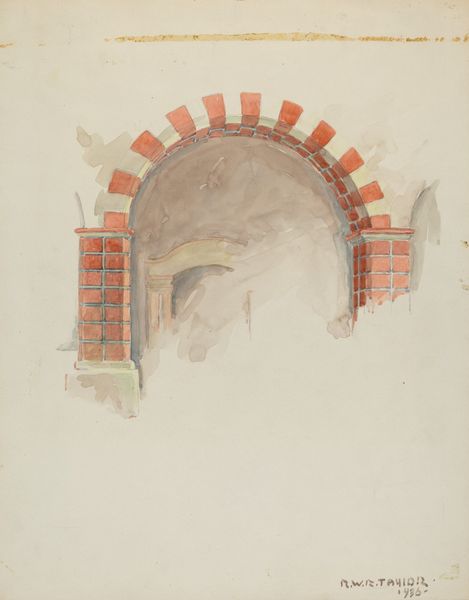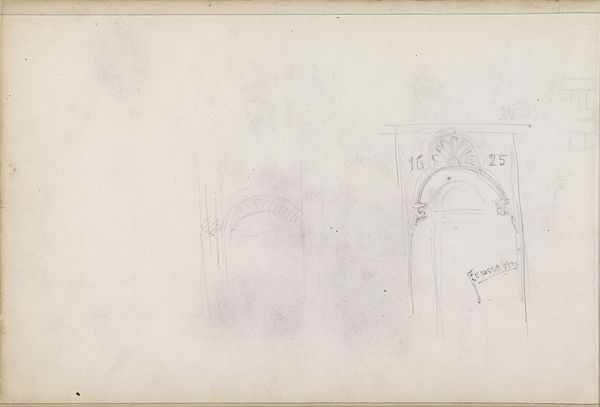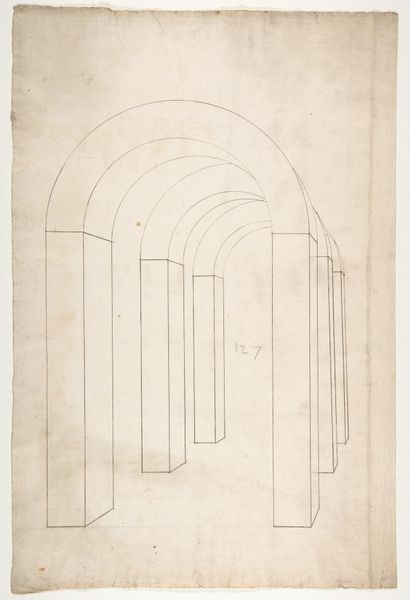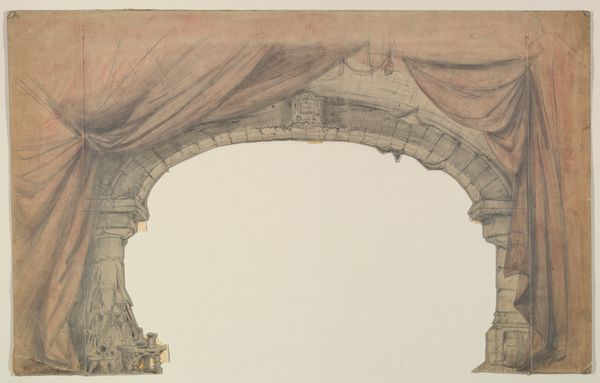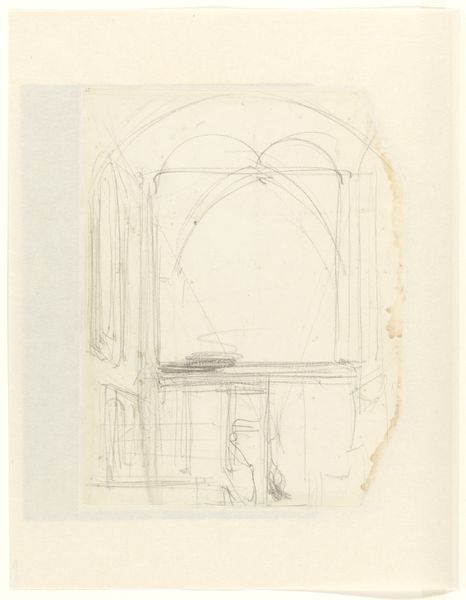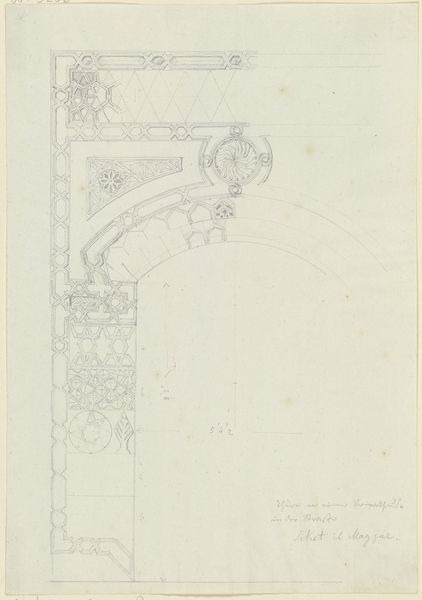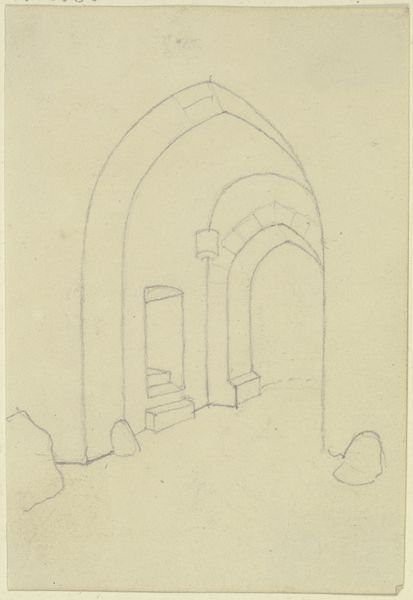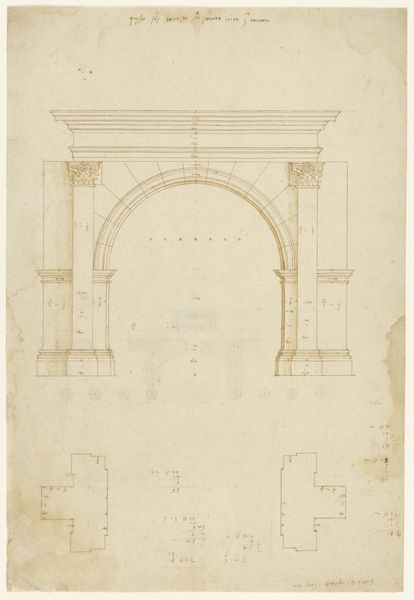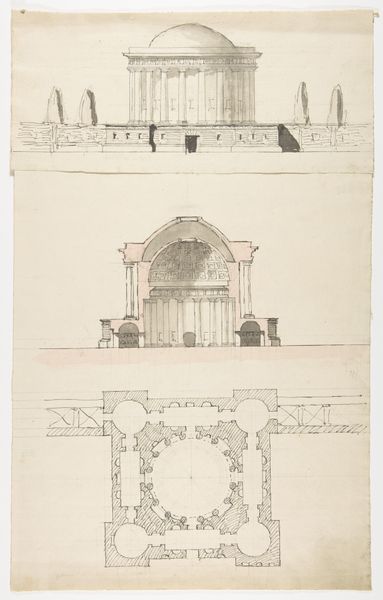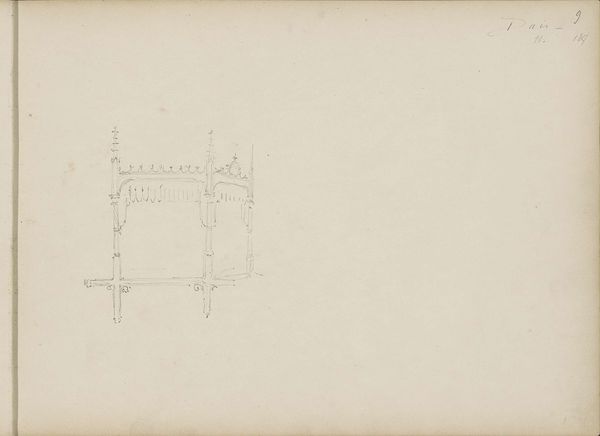
Restoration Drawing: Main Doorway & Arch to Mission House 1936
0:00
0:00
drawing, coloured-pencil, architecture
#
drawing
#
coloured-pencil
#
landscape
#
coloured pencil
#
geometric
#
architecture
#
realism
Dimensions: overall: 35.7 x 27.9 cm (14 1/16 x 11 in.) Original IAD Object: Height, base of pilaster-top of arch: 7'5"
Copyright: National Gallery of Art: CC0 1.0
Editor: Here we have Robert Taylor's 1936 drawing, "Restoration Drawing: Main Doorway & Arch to Mission House," made with colored pencil. The rendering is very precise, almost technical. What strikes me is how the artist focused on the geometry of the archway. What stands out to you, given its formal qualities? Curator: Precisely, it is the rendering of form and the structural integrity displayed that I notice first. Consider the repetition of rectangular bricks forming the arch, a perfect semi-circle, juxtaposed with the planned, yet unfulfilled, grid-like structure above each supporting column. Notice how the cool grey wash contrasts against the warmer hues of the bricks themselves, almost creating a tension between completion and potential. Editor: The contrast between the soft wash and sharp brick lines does add visual interest. How do you interpret the artist’s choice of medium here? A photograph might have captured more detail. Curator: An excellent observation. Taylor's choice to employ colored pencil allows for both precision and subtle modulation of tone. He isn't simply documenting; he is interpreting. Consider the almost unfinished quality – the way the washes bleed, the subtle variations in color on individual bricks. These invite us to consider the process of restoration itself, not just the finished product. It highlights the artistic expression through precise rendering, a departure from simple mimicry. Editor: That's insightful. I hadn't thought about it as an interpretation of the *process* of restoration, not just a rendering of architecture. I appreciate you directing my focus toward medium and geometry; I’m starting to view formal qualities as not just descriptive elements, but as devices for understanding. Curator: Indeed. It is through analyzing these visual elements that we arrive at a richer understanding of the artwork’s potential meanings. The aesthetic elements *are* the statement.
Comments
No comments
Be the first to comment and join the conversation on the ultimate creative platform.
